


FAITH AND JUSTICE
This Faith and justice page is devoted to occasional articles to showcase the challenges of maintaining faith in times of adversity.
Andrew and Valerie Ward have kindly agreed to take on this important role. They both have experience of working in various areas of development. They and their three children, Sasha, Tiago and Imani. are very much part of our Church.
Contact: Andrew Ward 07900 017394 dr_a_f_ward@hotmail.com
Matthew
There is no blueprint for agricultural development. Everywhere you go the situation for the farmer is a bit different, a bit nuanced. Everything has to be adapted for the local situation. And for those of us working in agricultural development we need to be flexible, working with people on the ground who understand the local situation better than we do. We also need to be open to constantly learning and thinking about how experiences from one location might have value (or negative impacts) in other areas.
Recently, I travelled with colleagues from Africa and Latin America to Guatemala. This was a tremendous opportunity to share agricultural experiences, but also to learn from the experts on the ground.
I was strongly impressed by how our association in Guatemala, Agrequima, has a long history of working in partnership across different sectors. It provides training in good agricultural practices to the private sector (including private farmers), government, and crop purchasers. What I particularly liked about my time meeting with these experts was that the training was not done in a vacuum: much of the training was focused on those who would be accountable for the implementation of these practices on the farms.
Agrequima really focuses on managing diversity in agricultural systems, as is apparent in their logo. We saw evidence of this in shadegrown coffee. Shade-grown coffee provides habitats for wildlife, particularly migrating birds. However, despite the shade, there is little or no impact on the productivity of the coffee. This was also apparent in the use of citrus as a trap crop for the deadly banana disease, fusarium wilt. This is a form of Integrated Pest Management that increases the diversity in the banana systems.
The circular economy was another focus of our visit. For over 25 years, Agrequima has been working to get plastic packaging out of the environment. It cannot do this alone and partnerships with the government and organisations such as Global GAP, which has a certification requirement for farmers to show evidence that they have taken empty plastic packaging to collection centres. Agrequima has been incredibly creative during this journey, creating collection sites made from recycled plastic, developing new styles of biobeds for the biological destruction of small quantities of pesticide residues, deploying mobile shredders, and using plastic recyclers.
Changing Approach to Rice Farming in Thailand
Last month, I was able to travel to Thailand for the first time since Covid-19. We have been funding work there will rice farmers. The aim of the project is to promote both climate smart agriculture and improved pest management. The farmers grow paddy rice, with water to flood the crop diverted into the field from a nearby river channel. This floods the field and the rice grows with its lower stem covered by water. Unfortunately, when the soil is covered in water it releases methane gas, which is a strong greenhouse gas. These methane emissions are why rice cultivation is one of the agricultural practices having a significant effect on climate change.
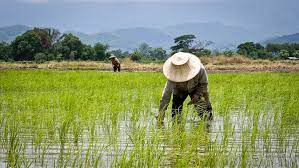 |
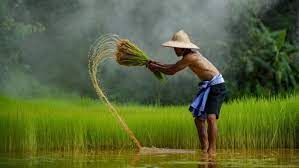 |
However, scientists have adapted the system of cultivation of rice in flooded fields. They have discovered that, if the field is flooded and then left to dry, less water is required, the rice grows just as well and emissions of methane are vastly reduced. This is called alternative wetting and drying. Combined with other changes, for example not using a plough which turns the soil over, the farmers have really been able to reduce the greenhouse gas emissions. And the good news is that they might also now qualify for payments under the carbon credits scheme which reflects the active steps they have taken against climate change. It will be good for the climate, good for the farmers.
The farmers have also increased their profits by implementing Integrated Pest Management or IPM. In IPM farmers inspect their fields for weeds, insect pests and diseases but also insects which might attack the pests. With an understanding of the ecology in the field the farmer only needs to use pesticide when necessary to save the harvest, as a result they are spraying their fields less. They have also been trained in identifying and use of more modern, less hazardous pesticides. The result has been an increase in both harvests and profits.
I met with a group of farmers, who have fields which were pretty small – about the size of a penalty box on a football pitch. These farmers were really excited about the opportunities that these improved ways of doing agriculture offered. One of the women present, had bought a drone. We are increasingly seeing drones being used in agriculture. For farmers who do not have a tractor, drones can apply pesticide much faster and with fewer risks than conventional approaches. Some drones can even identify where in the field needs spraying meaning less chemicals are applied. It is a changing world out there and it needs to be if we are going to minimise climate change and feed our populations.
Visit to Chile
I’ve just returned from a visit to Chile. It is a beautiful country with amazingly friendly people. The country is adorned by snow capped Andes mountains on one side and the Pacific Ocean on the other. These mountains are not just a thing of beauty - for the farmers the snow capped mountains are critical as the melting snow provides a source of water for crops.| These days there is a lot of drip irrigation used. The
irrigation pipe is like a hosepipe but with small holes from
which water drips onto the plants. It is incredibly water
effective and is great for growing fruit and vegetables. I
discovered that some of these pipes were made with recycled
agricultural plastics which was a really nice touch. |
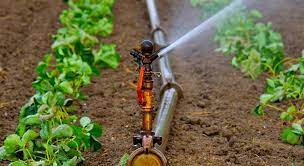 |
I have never been to Chile before but was told that it was starting to return to how it was before Covid-19. The obligation to use face masks was only lifted last month but since then there has been an increase in Covid-19 cases. This has hampered efforts to support farmers although it felt that the Chilean government had some nice approaches for supporting smallholder farmers.
Rather than just giving agricultural advice, there was also support to adding value to their products. For example rather than just supporting farmers who grow the prickly pear cactus (for its fruits – I was reminded of Baloo eating them in the Jungle Book), facilities were also provided so that the fruits could be made into jam in certified health and safety conditions. Farmers were also able to access credit through the government program. In many countries this is a problem as banks rarely understand agriculture and often see lending to farmers as a risky investment.
I had half a day with our local team at their agricultural plastics and metals recycling centre. Apparently even 15 years ago recycling was virtually unheard of in Chile. People didn’t understand why this programme had been put in place for farmers. Now, wherever you go in Santiago (the capital), people deposit rubbish according to its recycling category and new industries have sprung up recycling ‘rubbish’ and creating new products. This is a real pioneering approach. Collection of farm plastics is a bit complicated in Chile. I think I was told that the country is 4,600km long but only 180km wide. However, through a series of collection centres and mobile collection centres which will come to certain areas on certain days, the program has been a success!
This was my first work visit to South America and although climate change is a major threat, Covid- 19 has had a significant effect and global price rises are a concern it did feel that farming in Chile is still moving in the right direction and the world needs to build on successes in farming.
Climate Change and Farming
One of my most vivid primary school memories is of large orange hardback hymn books being passed around so that we could sing ‘All good gifts around us’. The lines that resonated most with my younger self were ‘He sends the snow in winter, the warmth to swell the grain, the breezes and the sunshine and good refreshing rain’. It is an ideal but in most years we can thank God for the balance of weather which has enabled a harvest to be produced and our population to be fed.
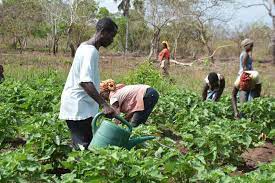 |
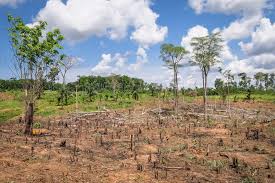 |
The problem for poor farmers is when the weather required by the crop doesn’t come or too much of it comes at once. The impact on the harvest can be terrible and most small scale farmers in developing countries do not have crop insurance or forms of compensation for lost harvest. My experience is that crop destructive weather is happening more frequently. Evidence shows that climate change is having a greater effect on the less well off. For millions of poor people climate change makes life harder, their livelihoods more precarious with less control over their destiny.
The occurrence of more frequent droughts is one of the clearest impacts of climate change but there are a multitude of impacts, I will describe a few below.
A few years ago I was in Zimbabwe. The government was looking to help farmers mitigate against droughts by providing farmers with irrigated land for growing their maize. It seemed like a simple solution but it had neglected to consider another effect of climate change. Over a certain temperature the pollen of the maize does not set, the plants do not get pollinated and so the plants do not produce cobs of corn. Climate change is making these temperatures occur more frequently and so even with the irrigation water the maize crop is still more likely to fail.
Heavy rain and flooding can be devastating to farmers as they can physically break or wash away plants or cause rotting. When I lived in Nigeria farmers used to plant a tuber crop, yam, close to the river Niger. The yam would grow in the moisture from the river and the farmers knew when the rains would come and so they would harvest the yam before the rains came and the river flooded. Since then with more erratic rainfall harvesting has become a lottery, if the river floods before the harvest the water covers the field and all is lost, but if you harvest too early the yield is small.
Ever since humans started to farm they have selected what they thought were the best seeds to plant. This grew into the science of plant breeding in which you are cross fertilising varieties of a crop to develop seeds that grow into better plants. When I started work there was a lot of emphasis on traditional plant breeding to overcome problems. Although it might take more than 15 years for the plant breeders to develop a seed that can be sold to farmers this was ok because the farm environment would not change that much in 15 years. But climate change is rapidly changing the weather conditions and also the pest problems that the crop face. With such a rapid change in the farm environment plant breeders, using traditional techniques, struggle to produce new varieties of seeds fast enough.
I won’t go on but I hope that this gives a flavour of why, in terms of food production and peoples’ livelihoods, I pray for humanity to make the right decisions and do the right actions that would lead to a reduction in green house gas emissions and as fast as possible and limit the impact of the devastating changes in the climate that we are witnessing.
In my work I have been challenged with how we can continue to provide farmers with guidance and support despite not being able to mobilise staff for face to face contacts with farmers. The innovation in the face of adversity has been amazing. In Africa instead of face to face training farmers were sent SMS messages reminding them of what they could do to increase their yields. The team swiftly realised that they were communicating with many more farmers than they had previously (about ten times as many). In Latin America a mobile phone based app has been promoted in 17 countries bringing together all aspects of agricultural information – a sort of Wikipedia for farmers. Asia has also developed phone-based learning but has also seen entrepreneurs using drones to provide services to farmers. We will welcome the chance to go back to face to face training with farmers but I think this will be augmented by these new approaches that we developed during the Covid-19 outbreak.
ABOUT ST. GILES CHURCH
Covid and Poverty
I have previously written about positive things that have happened at a global level during Covid. But with the situation improving at home we should not forget those worse off than ourselves. I have recently had several discussions with people overseas who have told me that the end of Covid is very much NOT in sight for them and there have been some alarming headlines recently. The Economist recently published a map that showed that in many countries in Africa, Asia and even Latin America vaccination levels will be low until 2023.Last month I read an article which had the headline ‘COVID-19 hunger spike leaves 1 in 5 Africans malnourished’. This article went on to say that the number of people globally living in hunger rose by 161 million in 2020 with Covid-19 being the main cause of this. That is more than the population of the UK, Ireland and Germany. And this is in addition to the number of people who were already living in hunger. The total number of undernourished people in the world now stands at 811 million, almost 1 in ten. The article focussed on the impact on the poor of a loss of income due to health. I have seen this in African farms before, everything grows so quickly that illness can lead to weeds swamping a crop or a harvest getting spoilt. The article also said that the effects of Covid have been exacerbated by climate change.
It is frustrating to hear about people suffering so much, particularly when we feel helpless to do anything to alleviate this suffering. Early on in the pandemic, UN Secretary General Antonio Guterres came up with a brilliant metaphor: ‘COVID-19 has been likened to an x-ray, revealing fractures in the fragile skeleton of the societies we have built.’ If Covid-19 can change society aren’t we in an even better position to change society, not to set everything back to how it was in 2019 but to change this world so that it is a better place for everybody to live. Maybe we should be looking for more than just Covid relief!
Andrew Ward
Locusts
My primary school teacher told me that grasshoppers make their noise through rubbing their legs, rather than through their mouth. This was something a younger version of me could fact check and catching grasshoppers became a game. As I started to work with farmers overseas one of the pieces of information that intrigued me was that the only difference between the locusts that we see on the news and the grasshoppers in those areas is that the locusts live together in swarms. They are just grasshoppers who have a lot of food available and so live together rather than living as individuals.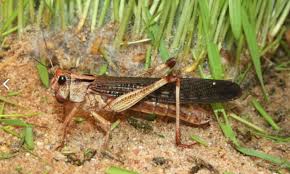
And the swarms are huge. One recorded swarm is 37 miles long and 25 miles wide — that’s more than twice the size of Paris. A swarm this size, in one day, would eat as much food as the population of France. These swarms can travel 100 miles in a day and contain 40-80 million locusts. Locust swarms described in the Old Testament didn’t seem this fearsome.
The main locust outbreak at the moment is of the Desert Locust species. Usually this species exists as grasshoppers in the Saudi peninsular. There is not a lot of food for them there to sustain a large population. However, because of unusually high rainfall, there has been an abundance of food for the grasshoppers and their population has grown and developed into a locust swarm.
Locusts are not strong fliers, they utilize the wind to take them to new areas. The swarms first spread to Yemen. Due to the civil conflict and focus on humanitarian relief little attention was paid to controlling the locusts. SO their numbers grew AND GREW as they feasted and were then blown across the Indian Ocean to Pakistan. But because of tensions across the Pakistan-India border, where the locusts settled, the two countries were not able to undertake any aerial spraying of the locusts. When they spread to areas where they could be sprayed one official remarked, after spraying, that ‘the density of locusts in the swarms is so high that a 10 to 15-centimeter layer of dead locusts forms on the ground after spraying’.
A change of wind in the Saudi peninsular has taken other swarms of locusts south to Eritrea, Ethiopia, Kenya, South Sudan, Uganda. These swarms continue to grow and are likely to get a boost when the rain season starts in East Africa. The next generation of locusts are about the hatch and their voracious appetite will further damage potential harvests in the region.
This may not be the number one priority on the British news these days. However, livelihoods are being wrecked across two continents and human actions affecting the climate and conflicts are magnifying the impact of the locusts. Efforts are being made to increase control of the locusts through aerial spraying, the use of drones and one story mentioned using ducks to eat the locusts. As yet we do not know how many will suffer and in what ways, I saw an estimate of 19 million people being affected, at this stage we just don’t know.